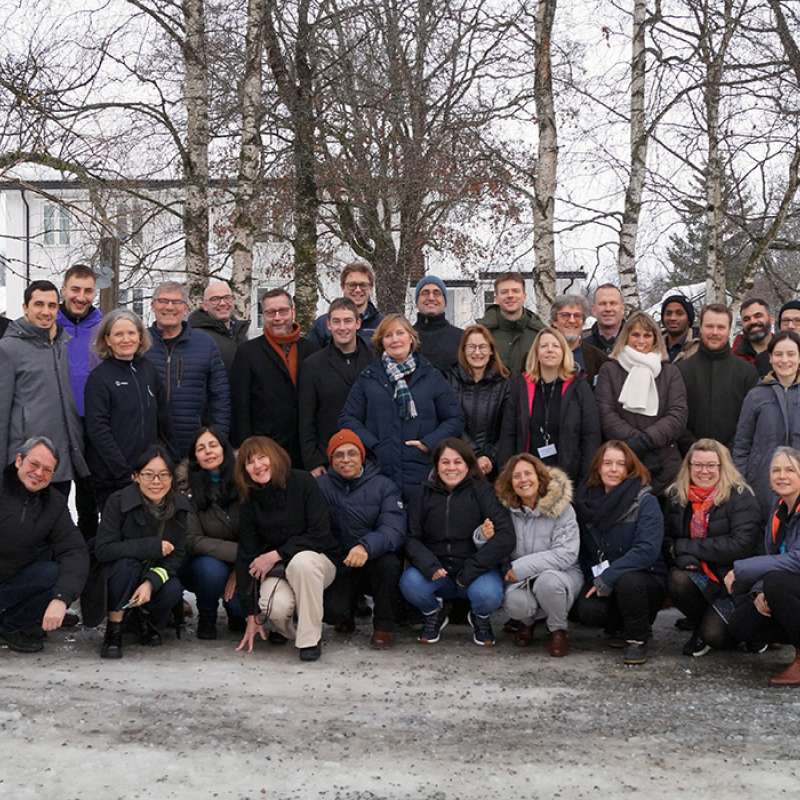Andrea Ficke
Seniorforsker
Vedlegg
CV Andrea FickeBiografi
Sammendrag
Det er ikke registrert sammendrag
Sammendrag
Det er ikke registrert sammendrag
Sammendrag
Det er ikke registrert sammendrag
Forfattere
Andrea FickeSammendrag
Det er ikke registrert sammendrag
Sammendrag
Det er ikke registrert sammendrag
Sammendrag
Det er utført forsøk med soppmidler i bygg, løk, gulrot og eple. I bygg er det testet ulike varslingsmodeller i VIPS mot byggbrunflekk. I gulrot er det utført forsøk mot gropflekk og ulike lager- og bladflekksjukdommer både i felt og på lager. I eple er det gjort forsøk for å finne nye midler mot lagersjukdommer.
Sammendrag
Det er ikke registrert sammendrag
Sammendrag
Det er ikke registrert sammendrag

Divisjon for bioteknologi og plantehelse
Mer mangfold i dyrkingsstrategiene for å øke lønnsom produksjon av sunne økologiske korn- og proteinvekster
Mer mangfold og biodiversitet i dyrkingsstrategiene kan være nøkkelen til økt, stabil og lønnsomproduksjon av korn- og proteinvekster i Norge. Flere tiltak har blitt testet for å se på effekten avulike tiltak på jordhelse, erosjon, ugras, plantehelse og avling, men lite er kjent om hvordan enkombinasjon av flere tiltak vil påvirke disse viktige faktorene. Prosjektet ‘Mer mangfold idyrkingsstrategien for å øke lønnsom produksjon av sunne økologisk korn- og proteinvekster’ vilteste og demonstrere effekt av kantvegetasjon, jordarbeiding, fangvekster, variert vekstskifte,sortsblanding og samdyrking på skadedyr, soppsjukdommer og avling i både økologiske ogkonvensjonelle forsøk. En forsøksperiode på 3 år er for kort til å vise langtidseffektene til de uliketiltakene, men vil kunne gi en bedre forståelse for hvilke tiltak som kan kombineres og hvordandisse påvirker plantehelse og produktivitet på kort sikt. Vi ser også for oss at flere forsøksfelt og øktforskningsaktivitet rundt sortsblandinger, samdyrking av ulike vekster, bruk av kantvegetasjon,bruk av proteinvekster i vekstskifte og lønnsomhet kan føre til økt interesse hos gårdbrukere å prøvemer varierte tiltakene i økologisk og konvensjonelt/ regenerativt landbruk.

Divisjon for bioteknologi og plantehelse
Plant Pest prevention through technology-guided monitoring and site-specific control
One of the ambitious goals of the Farm2Fork strategy is to reduce the use of pesticides in the EU by 50%. The expected increase in plant pests due to climate change, international trade and the intensification of food production systems offsets this target.

Divisjon for bioteknologi og plantehelse
Plant Pest Prevention through technology-guided monitoring and site-specific control (PurPest)
The main objective of PurPest is to control serious plant pests during import and to manage them in the field by developing a unique concept enabling pest detection in a timely and non-invasive manner.
